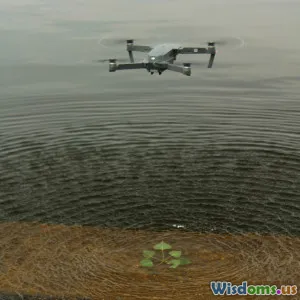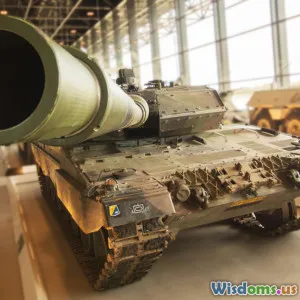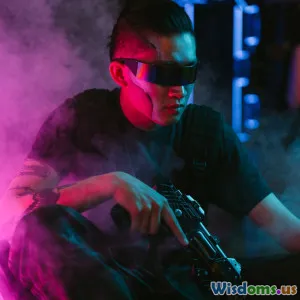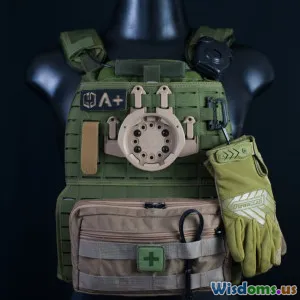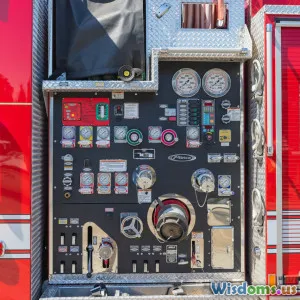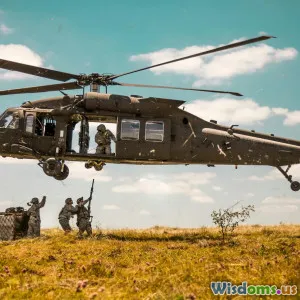
Augmented Reality in Combat Training
7 min read Explore how augmented reality is revolutionizing combat training for military personnel, enhancing skills and readiness. (0 Reviews)
Augmented Reality in Combat Training
Introduction
In a rapidly evolving battlefield landscape, military forces around the globe are increasingly turning to advanced technologies to enhance training and operational effectiveness. One such technology that has gained significant traction is Augmented Reality (AR). By overlaying digital information onto the physical world, AR provides a revolutionary training tool for soldiers, aiding in everything from tactical simulations to real-time decision-making. This article explores the impact of AR in combat training, its current applications, and the future it holds for military preparedness.
The Rise of Augmented Reality in the Military
Augmented Reality is not just a futuristic concept; it is a practical tool that is already being integrated into military training programs. AR can transform standard training exercises into immersive environments where soldiers can practice skills in realistic scenarios without the associated risks of traditional live training. For instance, systems like the Synthetic Training Environment (STE) developed by the U.S. Army utilize AR to create realistic combat simulations that can be adapted for various missions and terrains.
Benefits of Augmented Reality in Combat Training
1. Enhanced Realism
AR technology allows soldiers to engage in highly realistic training scenarios. By simulating combat situations with overlays of critical information — such as enemy positions, tactical maps, and real-time data — soldiers can experience a more authentic training environment that closely mimics actual conditions.
2. Cost Efficiency
Traditional training methods often require extensive resources, including live ammunition, specialized equipment, and logistics for real-world scenarios. AR reduces these costs, enabling military forces to conduct effective training exercises without the need for physical resources. As a result, training can occur more frequently and at a lower cost.
3. Increased Safety
Incorporating AR into training minimizes the risks associated with live training exercises. Soldiers can practice maneuvers and tactics in a controlled environment, reducing the likelihood of accidents or injuries. This is particularly beneficial for high-risk scenarios that involve complex weapon systems or urban combat.
4. Improved Learning Outcomes
AR can cater to different learning styles by providing visual, auditory, and kinesthetic experiences. This multi-faceted approach helps soldiers retain information better and apply it more effectively in real-life situations. Additionally, AR can offer instant feedback during training, allowing for immediate corrections and enhanced skill development.
Current Applications of Augmented Reality in Combat Training
- Training Simulators
Military organizations are utilizing AR in simulators that replicate various combat environments. For example, the U.S. Marine Corps has implemented AR glasses that provide real-time data and tactical overlays during training exercises, facilitating better decision-making and situational awareness.
- Maintenance Training
AR is also being employed for technical training, such as aircraft maintenance. By using AR applications, technicians can view step-by-step instructions and diagrams overlaid on the machinery, improving accuracy and efficiency in maintenance procedures.
- Tactical Planning
AR tools are enhancing command and control by allowing military leaders to visualize strategies on digital maps with real-time data. This capability enables more effective planning and execution of operations, as leaders can anticipate potential challenges and modify strategies accordingly.
Future Prospects of Augmented Reality in Military Training
As technology continues to evolve, the potential applications of AR in military training are boundless. Looking ahead, we can expect:
- Integration with AI: The combination of AR with artificial intelligence could lead to adaptive training systems that analyze soldier performance in real time, tailoring exercises to individual strengths and weaknesses.
- Enhanced Collaboration: Future AR systems may allow for multi-user environments where soldiers can train together, regardless of their physical location, fostering teamwork and collaboration.
- Field Applications: Beyond training, AR could be utilized on the battlefield for navigation, target acquisition, and mission planning, providing soldiers with critical information at a glance.
Conclusion
Augmented Reality is poised to redefine how military training is conducted. By enhancing realism, improving safety, reducing costs, and facilitating better learning outcomes, AR offers a promising avenue for preparing soldiers for the complexities of modern warfare. As military forces continue to innovate and embrace new technologies, AR will undoubtedly play a crucial role in shaping the future of combat training and operational effectiveness.
Call to Action
As we stand on the brink of a technological revolution in military training, it is essential for military organizations to invest in and explore the capabilities of Augmented Reality. Through ongoing research and development, we can ensure that our armed forces are equipped with the best tools to meet the challenges of the future.
Rate the Post
User Reviews
Popular Posts

















